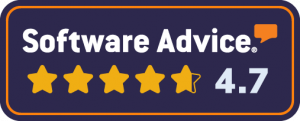They can grow your audience, keep readers engaged and become a massive source of revenue. Sounds like the holy grail of advertising tools, right? We’re talking e-newsletters. And in a way, they are the holy grail of advertising tools. You just have to know how to make the most of them.
But why are they so successful? What do e-newsletters offer that other forms of advertising might not? There are three key factors:
-
- Your email subscribers trust your content to be valuable. Most brands can’t produce the types of content that build an audience like yours—and they know that. Advertising within your newsletter(s) provides an opportunity to link their brand values to yours and strengthen their reputation with your readers.
- The data is easy to digest. Subscriber numbers, open rates, and audience data are measurable and easy to digest. Your sales team can quickly communicate why your newsletter products are an effective marketing vehicle.
- Strong one-on-one connections with readers. Many who cite the efficacy of e-newsletters mention that good email content helps you build a one-on-one connection with your reader. Compare this to crowded social media feeds, and you can see how it’s easier to get noticed within an opt-in email than it is paying for a sponsored post on Facebook, Instagram, or Twitter.
According to a 2022 Digital News Report by the Reuters Institute, only 26% of Americans generally trust the news. That means trust in the media is at its lowest point ever. With fake news accusations flying every which way, e-newsletters help you engage directly with your readers to build and retain their trust. E-newsletter advertising remains easy to sell, too, because it offers tangible value to advertisers.
An in-depth look into how three industry professionals created successful e-newsletters shows that there is no “one way” to attract and keep advertisers. They do all agree on one thing, though. To build the most competitive ad product, you need to analyze what your readers want and how it aligns with your company’s needs.
Advocate Media — Dallas, TX
Rick Wamre, CRO and Founder of Advocate Media, believes that it doesn’t pay to blindly send out e-newsletters and hope for the best. It takes planning, research and, most importantly, a relevant database of subscribers. There are a couple of ways to get the latter.
“One is to buy email lists,” Wamre said. “Send them out and try to build it up that way.” Advocate Media tried that in the beginning, but Wamre said it ended up being a waste of time. “Most of the lists you buy aren’t local; they aren’t even good. So, we did the slower and longer way. We went to a lot of community events and promoted our e-newsletters. We promoted them online and in print. We painstakingly gathered hundreds, then thousands, of local people’s emails.”
At first, Wamre said they only went after email addresses. “We didn’t always ask for names. We didn’t ask for ZIP codes or addresses. The more requests you make for information, the less likely people are to complete the form.”
Starting with the basics worked for Advocate Media. Over time, the company was able to build up a strong database with thousands of emails. That’s when Wamre says they started thinking about the presentation of their e-newsletters. If the company presented itself in an off-putting way, it would run the risk of weakening the database.
“It took us a while to work out the presentation. We tried multiple looks, different fonts and headers. We wanted to present it in a way so that people knew it was advertising, but it didn’t rub them the wrong way.” Through trial and error, Advocate Media eventually found the best presentation for their e-newsletter. “Basically, we make it clear that it comes from an advocate,” Wamre said.
With a solid database and attractive presentation, the company shifted its focus to retention. One of Wamre’s major worries was that people would unsubscribe once they got the e-newsletters. The solution? Keep it local.
“We target local advertisers and let them put their message in front of our readers, who are also local. Most people recognize that these are local messages, so even if they don’t click on something, they’re not unhappy about getting it.”
Wamre says people unsubscribing has proven to be a rare occurrence, despite their initial worries. Today, e-newsletters make up a significant source of Advocate Media’s revenue.
5280 Publishing, Inc. —Denver, CO
Ari Ben, Ad Director for 5280 Publishing, Inc., agrees that trial and error plays a crucial role in perfecting e-newsletter advertising.
“I think that goes for anything related to any digital media,” Ben said. “The way our sponsored content offering used to look within the e-newsletter has been revamped several times over the years, both to enhance the advertiser experience and to make sure that the user experience is where it should be. We’ve tailored our data segments and things like that many times over. Again, we want to make sure we’re offering an efficient solution for advertisers, but not alienating users in any way.”
5280 Publishing, Inc. pitches the e-newsletter as a unique opportunity to elevate various brands through an alignment with their editorial copy. “The way we essentially sell it is as a 100% Share of Voice (SOV) opportunity, where the client or advertiser would have ownership of the prominent banner units within the e-newsletter.”
Ben says they’re constantly thinking of ways to level up the company’s e-newsletter as an ad product. “We’ve taken it a step further in recent years, where we offer sponsored content posts and opportunities within the e-newsletter. It’s well integrated by our team through our template and has proven to be really successful.”
On top of the e-newsletter, 5280 Publishing, Inc. offers a marketing e-blast. It’s entirely owned by the partner and strategically targets readers based on specific information, like topics of interest or geolocation. Ben says each advertising method has proven effective, but can be more or less so depending on the partner’s needs.
417 Magazine — Springfield, MO
Write what people want to read, and the advertisers will come. That’s the advice of Ammie Scott, VP of Strategy and Senior Account Executive at Whitaker Publishing, the company that produces 417 Magazine.
“What we found with our most popular newsletters is that these are things people want to know about,” Scott said. “These are things people are searching for. People are finding value in it. So, we’re not getting a lot of people opting out of that.” The company discovered early on that targeting niche audiences would play a key role in the success of its e-newsletters. They doubled down, chasing quality over quantity.
“Years ago, we had probably six e-newsletters,” Scott said. “We now have three. From an editorial standpoint, we just didn’t have enough time to make all of them as high quality as the ones we currently have. So, we got rid of a couple and really focused on the ones that were doing the best and that we had the best opportunities to sell advertising on.”
Their most popular newsletters, Datebook and Table Talk, are getting so much traffic that Scott says they’re at the point where they can consider a rate increase. But that’s a balancing act of its own. “We’ll be weighing our options. [Advertisers] often have a limited budget. We know the e-newsletter ads are delivering value, we know we can raise the rate, but how much will the market bear in this particular category?”
Experience Share Q&A: Rick Wamre
Q: What are some of the top challenges facing your company right now?
A. Everything we’ve done has always been 100% supported by advertising, that’s it. It’s currently a challenge because there are fewer local advertisers than there used to be. And there are probably ten times the number of outlets looking for advertising money from local people. It’s just a constant challenge to stay relevant to advertisers, to stay affordable, and deliver services that people need.
Q: Any solution to that?
A. You just have to constantly be evolving the strategy of how to get emails. Just like advertisers need to constantly be promoting their businesses, we have to constantly be soliciting for email addresses. People die. People leave town. People opt out. You know, we’ve got to keep filling the numbers up.
Q: You talked about the importance of consistent advertising in e-newsletters. How do you dissuade advertisers from opting out early on?
A. We say that this isn’t a “one and done” type deal. Just think about the number of times you see Coke or Apple promoted. If you only see something promoted once or twice, how are you going to remember it with all the other ads being pounded on you? Small businesses need to keep reminding people that they’re out there.
Experience Share Q&A: Ari Ben
Q: As digital media evolves, why does e-newsletter advertising continue to work?
A: The easy answer is trackability. Being able to see metrics such as open rates, CTR, clicks. You’re going to have insight into metrics that you can use however you need to. With other media organizations—whether you’re in TV or radio or magazines—you’re sharing ad space with others, right? So, getting to have 100% share of voice is a big deal. Newsletters give you the chance to really own the space all to yourself and make the desired impact.
Q: You say it’s important to focus on the purpose of the e-newsletter. What do you mean by that?
A: It should be an extension of whatever it is you’re selling in media. If it’s magazines, then it’s an extension of your magazine. If you’re selling radio, whatever, you know, same thing, it’s an extension. It’s a great way to engage with your audience beyond whatever your traditional format is.
Q: What do businesses need to keep in mind to get the most out of e-newsletter advertising?
A: Always make sure you put the audience first, make sure the user experience is right. And the advertisers will come. I’ve been at other places where they might prioritize the quantity of a list or a database and build newsletters that don’t have any meaningful aspects to them, just to see how much they can sell. It’s always a recipe for quick success and long-term disaster. User experience is everything. Audience is everything. The revenue will come.
Experience Share Q&A: Ammie Scott
Q: You have experience putting out a variety of e-newsletters. Can you think of a time when something you did just wasn’t working?
A. We had a newsletter that we sunsetted several years ago all about live music in our area. We got an excellent sponsor for it, and we thought that it would do great. It had revenue on it, and it actually had a pretty good following. But it was such a monster to produce internally. A lot of the bands around here are small and the members work full-time jobs, so we couldn’t always get them to communicate with us. We didn’t feel like the newsletter was a real value to the reader because we couldn’t cover all the bands and the events that were happening. In the end, even though it was easy for us to sell, the time and effort that went into it wasn’t worth it.
Q: If that’s what an unsuccessful e-newsletter looks like, how does a successful one look?
A. There are a couple of components to think about. One: Is there an audience for it? Two: Can you sell advertising on it and is the advertising enough to pay for the labor? In the case of the music newsletter, it was too labor intensive to prepare every week. The revenue didn’t outweigh that issue. A successful e-newsletter gets a lot of views, a lot of opens, a lot of clicks. It gets people talking about it, people sharing it, people saving it.
Q: Any other key indicators that an e-newsletter is doing well?
A. Look at whether readership is growing or declining. If it’s growing, that shows us that there’s interest. We’ve had newsletters in the past where we could see that we were slowly losing people. That either means that the interest in that topic is waning, or our efforts in making it an interesting newsletter are waning. Either way, we have to evaluate that and decide whether to move forward or sunset it.





